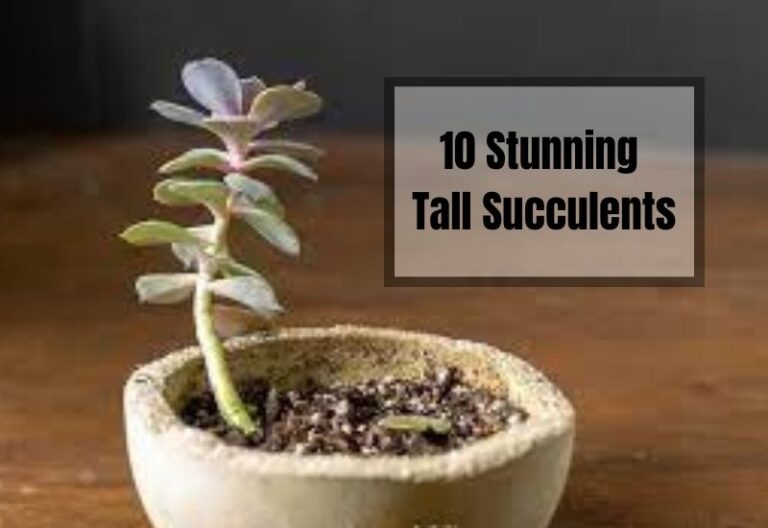Seasonal Garden Preparation Tips: Get Your Garden Ready for Winter
Are you ready to get your garden in tip-top shape for the upcoming season? Proper seasonal garden preparation is crucial for ensuring a healthy and thriving garden year-round.
Whether you’re a first-time gardener or a seasoned pro, there are always new tips and tricks to learn to help you achieve your gardening goals.

Understanding Your Garden’s Needs is the first step to proper seasonal garden preparation. Every garden is unique and has its own set of requirements. Before you start planting, it’s important to assess your garden’s soil, sunlight exposure, and drainage.
This will help you determine which plants will thrive in your garden and which ones may struggle. By understanding your garden’s needs, you can make informed decisions when it comes to selecting plants, fertilizers, and other gardening products.
Key Takeaways
- Understanding your garden’s unique needs is crucial for proper seasonal garden preparation.
- Spring is the time to prepare your garden beds and start planting.
- Regular maintenance, proper tools, and winter protection are essential for year-round gardening success.
Understanding Your Garden’s Needs

Before you start preparing your garden for the upcoming season, it’s important to understand its needs. This means taking into consideration the soil type, amount of sunlight, and water requirements of the plants you plan to grow. By doing so, you can ensure that your garden will thrive and produce a bountiful harvest.
Soil Type
The type of soil in your garden can greatly affect the growth and health of your plants. Some plants prefer well-draining soil, while others require soil that retains moisture.
Testing your soil can help you determine its pH level and nutrient content, allowing you to make any necessary adjustments. You can also consider adding organic matter, such as compost or peat moss, to improve soil quality.
Sunlight Requirements
Different plants have varying sunlight requirements. Some thrive in full sun, while others prefer partial shade.
It’s important to take note of the amount of sunlight your garden receives throughout the day and choose plants that are suitable for that level of light. You can also consider using shade cloth or planting taller plants to provide shade for those that require it.
Watering Needs
Plants have different watering needs, and it’s important to provide them with the right amount of water to prevent over- or under-watering.
Some plants require frequent watering, while others can tolerate drought. Consider using drip irrigation or a soaker hose to provide water directly to the roots of your plants and conserve water.
Spring Preparation

Spring is a time of renewal and growth, and your garden is no exception. As the weather starts to warm up, it’s important to prepare your garden for the upcoming season. Here are some tips to help you get your garden ready for spring.
Pruning and Mulching
One of the first things you should do is prune any trees and shrubs that need it. This will help promote healthy growth and prevent any diseases from spreading.
You should also consider mulching your garden beds to help retain moisture and prevent weeds from taking over.
Planting New Seeds
Spring is the perfect time to plant new seeds. Whether you’re starting a vegetable garden or planting some flowers, make sure to choose seeds that are appropriate for your area and soil type.
You should also consider using a seed starting mix to help give your seeds the best possible start.
Fertilizing Needs
As your plants start to grow, they will need plenty of nutrients to thrive. Make sure to fertilize your garden beds with a high-quality fertilizer that is appropriate for your plants.
You should also consider using a slow-release fertilizer to provide a steady supply of nutrients over time.
Summer Maintenance
During summer, your garden needs extra attention to keep it thriving. Here are some tips to help you maintain your garden during the hottest season of the year.
Watering and Weeding
Summer is the time when your plants need the most water. Make sure to water your plants deeply and regularly, especially during dry spells. However, be careful not to overwater your plants as this can lead to root rot. You can use a moisture meter to check if the soil is dry before watering.
Weeding is also important during summer as weeds can compete with your plants for water and nutrients. You can use a hoe to remove weeds or pull them out by hand. Make sure to remove the entire weed, including the roots, to prevent regrowth.
Pest Control Methods
Summer is the peak season for pests, such as aphids, spider mites, and thrips. To control these pests, you can use organic insecticides, such as neem oil or insecticidal soap. You can also use physical barriers, such as row covers or netting, to prevent pests from reaching your plants.
If you have a problem with dollar spot on your grass, you can use a fungicide to control the disease. However, make sure to follow the instructions carefully as some fungicides can harm your grass.
Here are some related posts that can help you maintain your garden during summer:
Related Posts:
- Does Dollar Spot Kill the Grass? Exploring the Impact of Dollar Spot on Your Grass
- Can You Use Sevin Dust on Roses? A Gardener’s Guide to Safe Pest Control
- Will Roundup Kill Asiatic Jasmine? Expert Insights for Weed Control
- How to Keep Outdoor Plants Alive During Hot Summer Months
- Will Vinegar Kill Wild Violets? A Quick Guide to Natural Weed Control
Autumn Preparation
As the leaves start to fall and the temperature begins to drop, it’s time to start preparing your garden for the colder months ahead.
In this section, we’ll cover two important sub-sections to help you get started: “Harvesting and Composting” and “Preparing for Winter.”
Harvesting and Composting
Autumn is the perfect time to harvest your vegetables and fruits. Make sure you pick them before the first frost, as this can damage or kill your plants. Some vegetables that are ready to harvest in the fall include carrots, beets, broccoli, and kale. For fruits, apples, pears, and grapes are all great options.
Once you’ve harvested your crops, it’s time to start composting. Composting is a great way to turn your food waste and yard waste into nutrient-rich soil that can be used in your garden.
Start by layering your compost bin with brown materials, such as leaves or shredded newspaper, and green materials, such as vegetable scraps and grass clippings. Make sure to turn your compost regularly to ensure it breaks down evenly.
Preparing for Winter
Winter can be tough on your garden, so it’s important to take steps to protect your plants. Here are some tips to help you prepare for winter:
- Mulch your garden beds with a layer of leaves or straw to help insulate the soil and protect your plants’ roots from freezing temperatures.
- Cut back any dead or diseased branches from your trees and shrubs to prevent them from falling and causing damage during winter storms.
- Drain and store your garden hoses to prevent them from freezing and cracking.
- If you have any tender plants that won’t survive the winter, dig them up and store them in a cool, dry place until spring.
By following these simple steps, you can ensure that your garden stays healthy and vibrant throughout the winter months.
Winter Protection
Winter can be a challenging time for your garden, but with a little preparation, you can ensure that your plants survive the colder months. There are a few things you can do to protect your plants from frost and other winter weather conditions.
Protecting Plants from Frost
Frost can be a major problem for your plants during the winter months. Here are a few things you can do to protect your plants from frost:
- Cover your plants with frost blankets or other protective coverings. These can help to insulate your plants and keep them warm during cold nights.
- Water your plants before a frost. Moist soil can help to retain heat, which can keep your plants warm during a frost.
- Move potted plants indoors or to a sheltered area. This can help to protect them from frost and other winter weather conditions.
Tool Maintenance
Winter is also a great time to take care of your gardening tools. Here are a few things you can do to keep your tools in good condition:
- Clean your tools thoroughly. Use a wire brush to remove any rust or dirt, and then wipe them down with a cloth.
- Sharpen your tools. Use a sharpening stone to sharpen the blades of your tools. This will make them more effective and easier to use.
- Oil your tools. Apply a thin layer of oil to the blades and other metal parts of your tools. This will help to prevent rust and other damage.
Choosing the Right Tools
When it comes to seasonal garden preparation, having the right tools can make all the difference. Here are some essential gardening tools to consider:
Essential Gardening Tools
Hand Trowel
A hand trowel is a must-have tool for any gardener. It’s perfect for digging small holes, transplanting seedlings, and removing weeds. Look for a trowel with a comfortable grip and a sturdy blade.
Pruning Shears
Pruning shears are essential for maintaining the health and shape of your plants. Use them to trim dead or damaged branches, shape bushes and shrubs, and harvest fruits and vegetables. Look for a pair with a comfortable grip and a sharp blade.
Garden Fork
A garden fork is great for loosening soil, removing weeds and rocks, and turning compost. Look for a fork with sturdy tines and a comfortable grip.
Garden Hose
A garden hose is essential for watering your plants. Look for a hose that is lightweight, kink-resistant, and easy to maneuver. Check out these lightweight garden hoses for some great options.
Garden Cart
A garden cart can be a huge help when it comes to transporting tools, plants, and soil around your garden. Look for a cart with sturdy wheels, a comfortable handle, and plenty of storage space. Check out these garden carts for seniors for some comfortable options.
Tool Care and Storage
Taking care of your tools is important to ensure they last for many seasons. Here are some tips for tool care and storage:
- Clean your tools after each use to prevent rust and corrosion.
- Sharpen blades regularly to ensure clean cuts.
- Store tools in a dry, cool place to prevent damage.
- Consider investing in a tool rack or organizer to keep your tools organized and easy to access.
Year-Round Gardening Tips
Maintaining a garden all year round can be a challenging task, but with the right techniques, you can achieve it. Here are some tips to help you keep your garden flourishing all year:
Sustainable Gardening
Sustainable gardening practices can help you create a garden that thrives all year round while minimizing your impact on the environment. Here are some sustainable gardening tips:
- Use compost: Composting is a great way to reduce waste and provide your plants with a nutrient-rich soil amendment. You can use kitchen scraps, yard waste, and other organic materials to create compost.
- Plant native plants: Native plants are adapted to your local climate and require less water and maintenance than non-native plants.
- Use organic pest control: Avoid using chemical pesticides and opt for organic pest control methods like companion planting, handpicking pests, and using natural predators.
- Use rainwater: Collect rainwater in a barrel and use it to water your plants. This is a great way to conserve water and reduce your water bill.
Plant Rotation Principles
Plant rotation is a technique that involves changing the location of your plants each season to prevent soil-borne diseases and pests. Here are some plant rotation principles to follow:
- Divide your garden into sections: Divide your garden into sections based on the type of plants you are growing.
- Rotate crops: Each season, rotate your crops to a different section of the garden.
- Avoid planting the same family of plants in the same section: Avoid planting the same family of plants in the same section of the garden for at least three years.
- Plant cover crops: Cover crops like clover and rye can help improve soil health and prevent erosion.
Related Posts:





